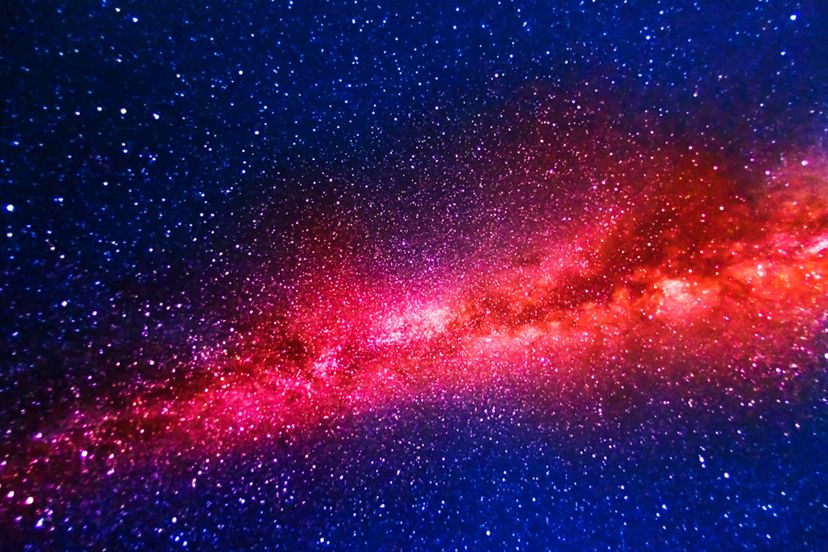
About This Quiz
"Ready to embark on a cosmic journey? Test your knowledge of the universe with the ultimate astronomy quiz! From black holes to distant galaxies, this quiz will challenge your understanding of the world beyond our own planet.
Dive into the depths of space and explore the wonders of the cosmos in just two short minutes. Whether you're a seasoned astronomer or just a curious stargazer, this quiz is sure to entertain and educate.
So why wait? Search for the answers among the stars and play the ultimate astronomy quiz today. Who knows, you may just discover something out-of-this-world!
"The International Astronomical Union recognizes 88 official constellations.
The equinox, which occurs in March and September, is a period when the sun is directly over the equator, resulting in days and nights being of equal length.
Parallax allowed ancient astronomers to calculate the distance between the Earth and various stars by studying the change in their positions as the Earth revolved around the sun.
Advertisement
Jupiter's moon Ganymede is not only the largest moon in the solar system, but is actually bigger than the planet Mercury.
The sun is a star that provides energy and heat to support all the life in our solar system.
A comet is simply a mass of gas and dust that orbits the sun....it can't land on Earth.
Advertisement
Meteors and asteroids remain in space, while meteorites are rocks that can actually land on the Earth.
A light-year measures the distance that light can travel in a single year. This type of measurement is necessary in space, where something as insignificant as a mile or kilometer just won't do.
A supernova is an explosion in space. It creates a bright spot that looks like a new star, but then fades away over time.
Advertisement
Now that Pluto has been demoted to a dwarf planet, there are only 8 official planets in our solar system.
A heliocentric solar system, like the one you live in, has planets that orbit the sun. Some ancient people mistakenly thought that the solar system was geocentric - one where the sun and other planets revolved around the Earth.
Kepler discovered the elliptical orbit of the planets, where one of the two focii in the ellipse was the sun.
Advertisement
Polaris is the current North Star, but Vega will take over in a few thousand years as the Earth shifts its position over time.
The entire planet Earth could fit inside Jupiter's red spot - a swirling storm that's been raging for many years.
Scintillation, which gives us twinkling stars to gaze upon, is caused by turbulence in the Earth's atmosphere.
Advertisement
While Saturn certainly has the most impressive rings of any planet, Jupiter, Uranus and Neptune all have rings of their own.
The four planets farthest from the sun - Saturn, Jupiter, Uranus and Neptune - are called gas giants thanks to their gaseous composition.
Less than 5 percent of the Milky Way galaxy is visible; the other 95 percent is made up of dark matter and dark energy.
Advertisement
A massive black hole - with a mass four million times that of the sun - sits at the center of the Milky Way.
While most moons are named after ancient Greek and Roman gods, the moons around Uranus take their names from Shakespeare.
Once thought to be a gas cloud, scientists now recognize Andromeda as a galaxy all its own.
Advertisement
The Milky Way consists of more than 200 billion stars, half of which are even older than the sun - which is around 4.5 billion years old itself.
Mars is home to Olympus Mons, the largest volcano in the solar system. It's about 100 times bigger than the largest volcano here on Earth.
With 63 moons, Jupiter has more than any other planet; Venus and Mercury have no moons at all.
Advertisement
Saturn's rings are mostly made of ice - and some are as thin as 30 feet (10 meters).
Halley's Comet swings by the Earth every 75 to 76 years. You can catch a glimpse next time it passes by in 2061.
A nebula is simply a cloud of space dust and various gases. It may represent a newly forming star or one that is close to the end of its life.
Advertisement
The Earth rotates on its own axis and also revolves around the sun.
A blue moon occurs when two full moons take place in the same calendar month. And no, it's not actually blue.
While NASA had its own SETI (Search for Extraterrestrial Intelligence) division from the late '60s through the early '90s, that division has been discontinued.
Advertisement